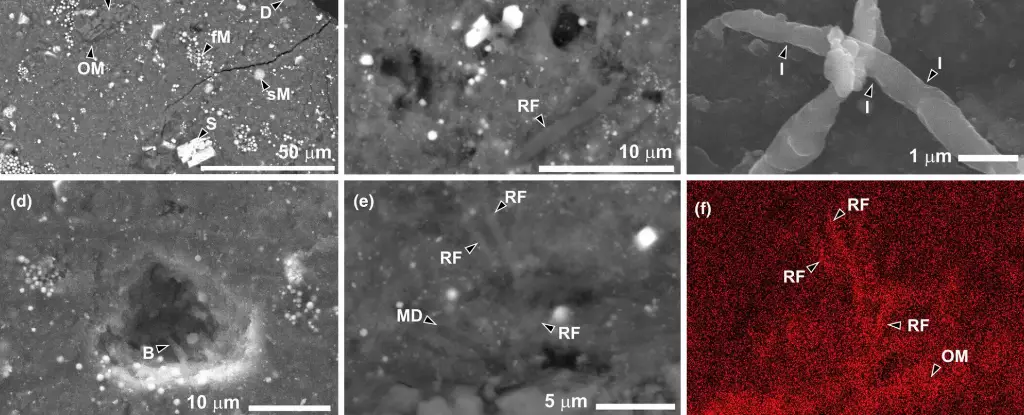The quest to understand the origins of life has captivated humankind for centuries, intertwining scientific inquiry with philosophical contemplation. Within this discourse lies the concept of panspermia—a hypothesis that posits life on Earth may have originated from microorganisms or biochemical compounds expelled from other planets or celestial bodies. Recent studies, particularly stemming from the Hayabusa2 mission, reignite fascination with this theory. However, amid the excitement, a critical assessment of the evidence reveals a complex interplay of factors that challenge straightforward conclusions about extraterrestrial life and its origins.
The Historical Context of Panspermia
Panspermia has a rich historical background, gaining traction in the 19th and 20th centuries, particularly when scientific discoveries demonstrated that cellular life appeared almost immediately after Earth became habitable. This rapid emergence raises significant questions about biological evolution on our planet. If cellular complexity, like DNA and the molecular machinations of life, requires vast timeframes to develop, how did life arise so early? The panspermia hypothesis offers a resolution to this paradox by suggesting that life’s precursors existed elsewhere in the cosmos, hitching a ride on asteroids or comets to seed terrestrial existence. While this idea offers intriguing possibilities, it is not without skepticism.
A critical examination of evidence from astrobiology is essential. While it is established that complex organic molecules are prevalent in space, this does not necessarily equate to the presence of life. For instance, the discovery of amino acids and sugars on various celestial bodies indicates that the fundamental building blocks of life are widespread. However, to assert that these molecules equate to actual life—especially in the form of microbes—requires a cautious approach. The Hayabusa2 mission, which successfully retrieved samples from asteroid Ryugu, generated excitement because researchers claimed to have found evidence of microbial-like structures. Yet, such findings warrant a deeper analysis.
The researchers’ conclusions assert that they identified rods and filaments resembling microbial life. However, this assumption could easily lead to misinterpretation. Microbial life is notoriously capable of survival and replication, displaying resilience in vastly diverse environments. Findings that appear indicative of extraterrestrial life might stem from contamination, a hypothesis that merits serious contemplation. Indeed, all experimental protocols in astrobiology for sample collection stress the utmost importance of avoiding contamination—yet, as history has shown, maintaining a sterile environment in practice is almost inevitably fraught with challenges.
When examining the reported evidence of life-like structures in Ryugu’s samples, it is crucial to consider the context. Not only do the shapes and sizes of these organic compounds align with terrestrial microbial life, but their growth rates also suggest a familiarity with Earthly conditions. If contamination is involved, it implies that life on Earth may have already infiltrated other celestial bodies, challenging the idea that our planet is a unique cradle for life. This realization highlights not just the need for improved sterilization processes in space missions but also emphasizes our historical tendencies to interconnect life between Earth and other bodies in the Solar System, forming a sort of biological bridge.
Exploring the Broader Implications for Astrobiology
Should we dismiss panspermia altogether based on the findings from Ryugu? Not entirely. While the most recent evidence does not support the notion that life has traveled between celestial bodies as confidently as some had hoped, it emphasizes that organic materials exist beyond Earth and could potentially support life as we understand it. The fact that asteroids harbor vital biochemical ingredients invites renewed enthusiasm regarding the feasibility of interplanetary colonization. Thus, even if life itself did not originate in space, there remains compelling evidence that asteroids and comets could act as conduits for organic materials, creating a viable foundation for future extraterrestrial life forms, should they be established.
The exploration of life’s origins—whether terrestrial or extraterrestrial—remains one of humanity’s most profound and enduring questions. The panspermia hypothesis brings with it potential insights into the ongoing cosmic narrative of life. Nonetheless, as science continues to evolve, it becomes imperative to approach findings with informed skepticism and rigorous scrutiny. As we enhance our understanding of astrobiology and planetary processes, we cautiously tread the fine line between uncovering the mysteries of life and the realization that our cosmic fate may be more connected than we initially perceived. The journey is far from over, and each new discovery leaves the door ajar for new questions about our place in the universe.

